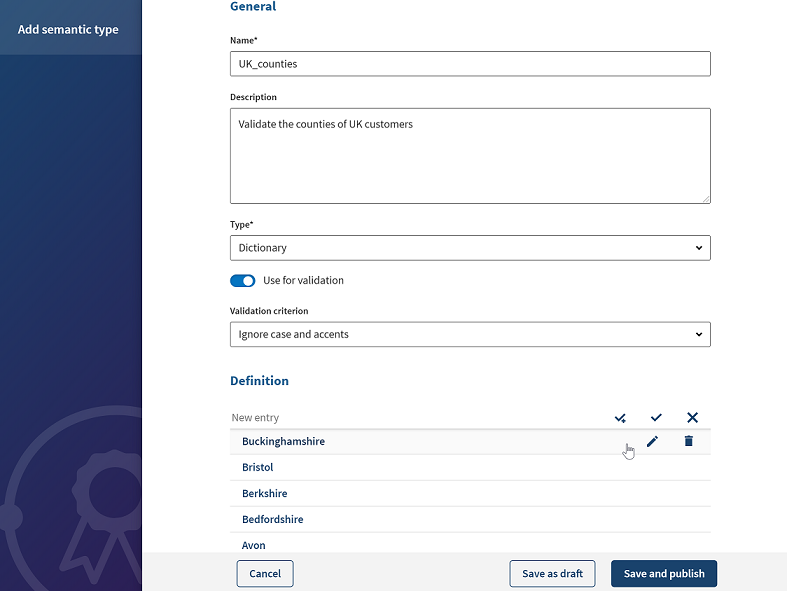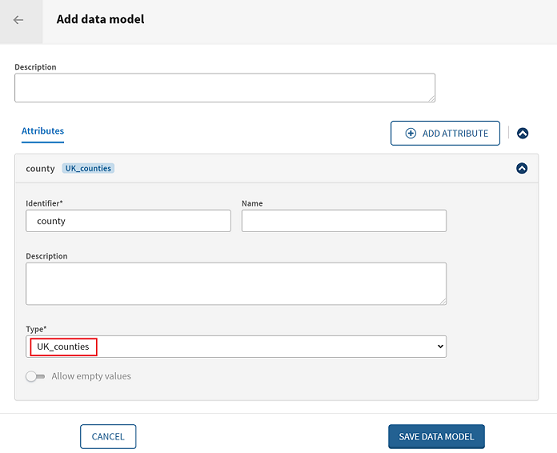Adding a new dictionary-based semantic type
You can create a semantic type based on a dictionary in Talend Dictionary Service and add it to the list of recognized data types in Talend Cloud Data Stewardship. However, duplicate values are not allowed in a dictionary-based semantic type as they are useless and can slow down the process.
In Talend Cloud Data Stewardship, not every type of data can currently be matched with one of the predefined semantic types. The counties of United Kingdom for example, are currently not recognized as such.
About this task
Let's say that you work for a British company, with customers only residing in the United Kingdom. In this example, you need to intervene and manage some customer data, such as their names, email address, or the county they live in. You will wonder what semantic type to use for the column containing the counties when you define the data model in Data Stewardship. You want here to add a semantic type specific to your data: UK_counties semantic type in this case.
You can create this new semantic type in Talend Dictionary Service, and it will be automatically available Data Stewardship so that your data can be matched with and validated against a proper type.
Procedure
Results
When you load data containing the United Kingdom counties to Talend Cloud Data Stewardship, they are matched with and validated against the proper semantic type, UK_counties that you manually created in Talend Dictionary Service.
Did this page help you?
If you find any issues with this page or its content – a typo, a missing step, or a technical error – let us know how we can improve!


